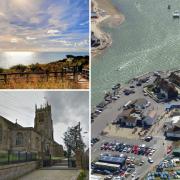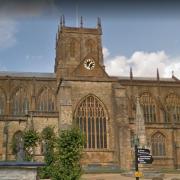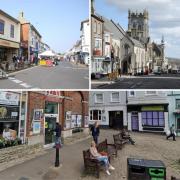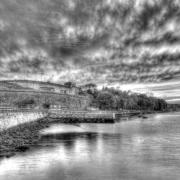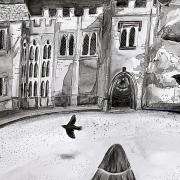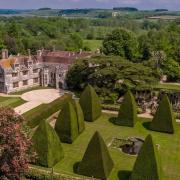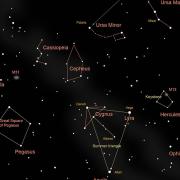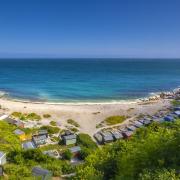Edward Griffiths visits the 'Little and Large' of lighthouses on our Jurassic Coast
Edward Griffiths visits the 'Little and Large' of lighthouses on our Jurassic Coast
Climbing the apparently endless spiral of 174 stone stairs and 19 cast-iron steps inside Portland Bill lighthouse, I wondered why on earth must Portland Bill be so tall, when Anvil Point is so short? The thin air must have been affecting my brain and, back on terra firma, I worked it out. Portland Bill lighthouse stands on a rocky platform barely two metres above mean high water, and the actual light is 43 metres above sea level. Anvil Point stands on cliffs 33 metres high but its light is 45 metres above sea level, so the heights of their beams are almost the same. Simple really.
Dorset has only two working lighthouses, but they're both very photogenic. Nearly everybody takes home some lovely pictures, but not many visitors know much about their subjects. So, with the help of Trinity House, the guardians of the UK's lighthouses and shipping, I've been back to explore Portland Bill and Anvil Point lighthouses to find out why they're where they are, how they came to be built, how they work, and what their relevance is today, when everything seems to be fully automated and ships are full of computerised wizardry and nautical sat navs. It was a relief to find real people and real buildings with real history and real character in both places, as different as chalk and cheese but with a common purpose - to keep shipping safe along our beautiful, but often treacherous, coastline.
Before we get too involved, I must tell you first about one major difference between squat little Anvil Point and enormous Portland Bill. Portland Bill's light is ten times more intense than Anvil Point's. Talking in candelas, Portland Bill has 635,000, reaching 25 miles out to sea, and Anvil Point has just 60,000, but it still reaches 18 miles.
Portland Bill
The words 'Portland Race' have struck fear and trembling into thousands of mariners over the centuries, and many vessels have foundered in the heaving waves. This fearsome phenomenon is caused by the meeting of tides between Portland Bill and the Shambles sandbank about three miles south-east. You can clearly see the continuously breaking waves reaching out from the hazardous point of Portland Bill. The lighthouse guides vessels on their way to Weymouth and Portland through these dangerous waters, but the present magnificent red-and-white striped tower isn't the first lighthouse to be built here.
The first two were built as a pair when, after years of petitioning by the people of Weymouth, Trinity House obtained a patent from George I in 1716. The upper and lower lighthouses were built and operated by a consortium, but they were poorly maintained and sometimes the coal-fired lights weren't lit until long after sunset. When the lease ended, one of the towers was replaced by a local builder and, in 1788, Argand lamps were fitted to both lighthouses. They were lit by oil, with their lights intensified by highly polished reflectors.
The upper and lower lighthouses you can see today as the road approaches Portland Bill were built in 1869 to replace the earlier structures. Today, the lower lighthouse is owned by the Royal Society for the Protection of Birds (RSPB) and used as a bird observatory. The upper one was converted into a private residence, and was once home to Marie Stopes, the passionate geologist and birth-control pioneer.
The present lighthouse came into operation on 11 January 1906, replacing both of the older buildings and, owing to its arrangement of panels, the signal is very unusual. It gradually changes from one flash to four flashes between bearings 221 and 224, and from four flashes to one flash between bearings 117 and 141. In fog, the huge red 'trumpet' halfway up the tower booms out a 3-second blast every 30 seconds. The compressed air comes from huge pressure vessels on the ground floor - and it's suggested you don't stand too close when it's trumpeting!
The lighthouse is unmanned now. Monitoring and control was transferred to Trinity House Operations Control Centre in Harwich on 18 March 1996, but the Lighthouse Visitor Centre welcomes visitors to its museum, its shop and its 41-metre high tower.
Incidentally, the 7-metre high white stone obelisk at the southern tip of Portland Bill was built in 1844 by Trinity House to warn coast-hugging ships about the underwater shelf of rock which continues out to sea for another 30 metres.
Anvil Point
We have a delightful watercolour picture of Anvil Point at home, and I still remember the day we bought it in Swanage. Charlotte Kienitz, the artist, was selling her paintings near Stone Quay and I made her promise not to let the picture go before I could run to the hole-in-the-wall and return with enough cash to pay for it. It reminds us of endless summer days spent relaxing and strolling idly around Durlston Country Park. That's where Anvil Point is - about two miles south of Swanage town centre. The low, chunky lighthouse is painted brilliant white with tasteful green details. It comes complete with a lighthouse-keeper's cottage, which is now a popular holiday let. And what a position for a holiday. Talk about sea views!
The guide who showed me around the lighthouse was at great pains to tell me that there had been no strange happenings, no unfortunate incidents and no ghosts. But Anvil Point is related to a much more famous lighthouse. It was built by James Douglas, who started work on the Eddystone lighthouse the year after Anvil Point was completed in 1881. Built as a 'passage light' to guide vessels along the English Channel coast, Anvil Point gives a clear line from Portland Bill in the west, and it guides vessels heading for the Solent away from the Christchurch Ledge in the east. It was officially opened by future Prime Minister Neville Chamberlain's father, who was then Minister of Transport.
Originally paraffin-powered, needing three keepers to maintain it throughout the night, the light was only converted to electric in 1960. The light turntable makes one revolution every minute around a solitary 24-volt, 35-watt bulb. Six sets of prismatic lenses, made by Chance Brothers of Smethwick, send out searching beams of light, each visible for 10 seconds. The size of the light bulb is unbelievable. It's about the size and shape of a man's middle finger and, if it ever fails, somebody sitting at the Operations Control Centre computer in Harwich presses a button and a little motor instantly swings a replacement into position. The failed bulb can then be replaced at leisure. The original explosive fog warning was replaced in the 1960s by a bank of massive electric loudspeakers but, as these were audible only up to two miles away - and not audible at all in a modern double-glazed wheelhouse - the fog-warning system was abandoned
Together, these two lighthouses stand sentinel over Dorset's Jurassic Coast, and a visit to one, or both, will intrigue adults and children alike. Leaving Anvil Point after my tour, I heard several parents being asked endless questions by very young children and even teenagers. So, go and see for yourself. It'll be very stimulating!
Opening Times 2009
Portland Bill Visitor Centre
Opening times and guided tours to the light platform:
The Lighthouse Visitor Centre is open 11am-5pm from 1 April to 30 June, closed Friday and Saturday. From 1 July to 30 September,
closed Saturday only.
Anvil Point
Guided tours only:
From 1 April, most Saturdays, Sundays and Bank Holidays except in winter.



